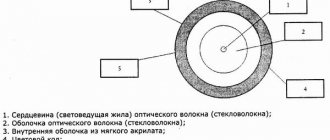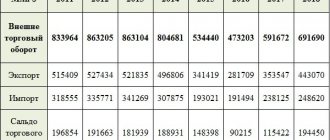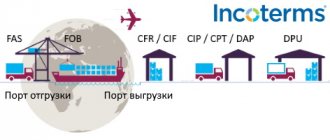Home \ Import and customs clearance of food products
Customs clearance of food products and other goods is carried out according to the procedure established by law. Customs clearance and clearance of goods at customs has some subtleties. Lack of knowledge in the field of customs legislation can lead to the formation of various unplanned incidents. A foreign trade participant must monitor the intricacies of legislative norms in order to resolve even the most difficult issues.
A reasonable solution would be to leave customs clearance activities in the hands of specialists. The initial overcoming of customs control involves some peculiarities, and knowledge of them makes it possible to make the customs clearance process efficient and comfortable.
A standard range of services for customs clearance of food products is provided on a general basis, using amendments to the Labor Code of Russia. Customs brokers of the Standard Line company keep under control all actions related to obtaining permission to import/export cargo. The powers of our employees cover all areas from preparing documents to carrying out international transportation activities.
Services for customs clearance of food products are provided according to a standard scheme, including the following actions:
- Registration and preparation of the necessary information;
- Preparation of technical description;
- Drawing up an expert opinion;
- Overcoming control authorities;
- Legal support;
- Certification;
- Shipping;
- Obtaining permission.
The Standard Line company is a reliable and responsible partner in the field of customs services. The company's activities cover all areas of foreign trade. Qualified employees are able to resolve any conflicts, which helps minimize client costs.
Services are provided in full compliance with the rules of the law. Customers who turn to us for services receive legal support throughout the entire customs clearance procedure.
Food products – food products are products in natural or processed form that are consumed by humans.
Customs clearance of food products
Customs clearance of food products is the process of clearing goods, carried out at a customs control point. All cargo that crosses the state border is subject to this procedure. Competent companies work on customs clearance tasks. Close cooperation with departments gives the right to solve any problems of customs services with a minimum of expended resources. The range of services includes:
- Declaration procedure;
- Calculation of customs duties;
- Overcoming control;
- Determination of HS codes;
- Setting the document type;
- Obtaining permits;
- Assistance in placing goods on the temporary storage warehouse;
- Shipping;
- Registration of permission.
Services for customs clearance of food products are carried out according to a certain algorithm. Purchasing a set of services provides a guarantee of round-the-clock assistance and minimizing all costs. Professionals of the Standard Line company will provide assistance in assigning the legality of imported goods for free sale.
State service
Record figures for food exports are explained by a good harvest in 2021 and successful market conditions, says Vasily Zablotsky, president of the SRO NFA.
— The production of agricultural goods in Russia is growing, partly due to the successful work of a large number of state programs to support agriculture. Targeted investments by the Russian Agricultural Bank are also bearing fruit: the credit institution significantly increased investments in the agricultural sector in 2019–2020. Therefore, we can expect further growth through the implementation of existing projects and the launch of new ones, says Zablotsky.
Secrets of customs clearance of food products
The issuance of a permit for the import/export of food cargo involves the execution of certain actions. The main task of the process is to assign legality to the import/export of cargo. The set of actions for customs clearance includes the preparation of a list of documents, payment of necessary fees and the declaration procedure. All actions are carried out according to the standard scheme. This category of products is perishable, and this makes it necessary to take into account many subtleties.
After arriving at the customs control point, you need to go through the cargo coding process. During this process, each product is assigned an individual HS code. Based on the individual code, the amount of import and export duties is calculated.
Food products are a specific category. This is due to some points:
- Best before date;
- Storage conditions;
- Storage method;
- Degree of processing;
- Conditions of transportation;
- Conditions for unloading/loading.
Need to know! For food products you need to obtain a certificate of conformity from Rosselkhoznadzor.
During the examination, the foreign trade participant receives a certificate. Laboratory control of cargo is also carried out at the customs post.
Need to know! Food products are perishable and therefore require special storage conditions. Such goods are subject to registration at specialized customs offices, which are equipped with temporary storage warehouses.
Food products are subject to extensive quality and safety controls. If viruses, bacteria and various other negative microorganisms are found in the product, the product is immediately quarantined. If danger is demonstrated again, the cargo will be disposed of.
Have questions? Standard Line professionals will give you a free consultation by number. Call!
80% of products in Russia are imported
In regular grocery stores, the share of goods of foreign origin accounts for about 10-20%. This is a group of products that are not produced in Russia: coffee, tea, fruit, olive oil, emphasizes Ilya Belonovsky, executive director of the Association of Retail Trade Companies.
The very meaning of the article is briefly this: everyone will benefit from joining the WTO. I especially liked the one about “with a reduction in customs duties, retail will be able to maintain its profitability.” I talked about their profitability many times; after the introduction of Federal Law 381 “On Trade,” retail did not lose anything at all, no matter how the lobbyists shouted about it, that the law for people and prices would decrease. It’s just that contracts with suppliers were rewritten with new wording, and they began to pay even more. By the way, the Ministry of Economic Development invited those who have control over the situation to a round table. I wrote to them on the website with suggestions. Guess the result.
I don’t think there’s any need to explain specifically what imports are on grocery shelves. Even 20% is already critical, but in reality it is much more. And similar articles above are simply nonsense of a person who does not even have close control of the situation.
Roughly imported products can be divided into the following categories:
1. The simplest thing is production in Russia by imported companies. Off the top of my head, how many brands can you remember? All this is imported. Even though it seemed to be made in Russia. But tomorrow they close and there is no more product.
2. A little more complicated, but more interesting. For example, the bun was baked in Russia. From Russian grain, using Russian ovens. But there is a nuance here. A couple of the ingredients are imported, and without them the bun will not work. The result will be a brick that will resemble bread in besieged Leningrad. No ingredients - no bun.
3. Goods packaged in Russia. That is, it will be “made in Russia”, everything will be fine, purely Russian goods. Only these tomatoes were grown in China, brought here and packaged here with a local address. Do you think this is minuscule? Do you know about Belaya Dacha, the largest enterprise near Moscow? They have been working on imports for a long time and are stupidly packaging them. What about canned goods and dumplings in stores? This is all made using imported raw materials; there is nothing Russian-made.
4. Products packaged there, but indicating the Russian manufacturer. You take it no matter what, but there is a large “manufacturer LLC Ilabian, Mytishchi.” And below is small “packaged at the Zhun-khy-af factory.” That is, people don’t bother at all and order the goods, but since they are the owners, they are Russian.
5. Well, the remaining 20% comes from goods that are made right there and this is not hidden in any way.
In total, according to my expert assessment, about 80-90% of imports are on the shelves of our stores. And let this head of the association give interviews about whatever he wants, he either does not control the situation or is deliberately misleading.
International transportation and delivery of food products
International transportation of food products is a special part of freight transportation. Transportation is associated with some precautions, the main purpose of which is to preserve the original characteristics of the goods. For favorable transportation of goods, it is necessary to create the necessary conditions. Transportation of food products is carried out using specialized refrigerators that can maintain the required temperature and moisture.
International shipping services include:
- Creating a custom route
- Maintaining comfort conditions
- Maintaining the required level of temperature and humidity
- Selecting a transportation method
- Calculation of the entire length of the route
- Labeling and packaging activities
Services for the international transportation of food products are performed using specialized installations. For food transportation, the temperature mode is set from 0 to +15. This applies to fresh goods. Freeze delivery is carried out at a temperature of -4 to -20 degrees.
Need to know! Deviation from the required temperature regime is unacceptable; this may negatively affect the quality and properties of the transported products.
Transportation of food products is carried out in specialized boxes or packages. Delivery takes place using different vehicles, including:
- Automotive;
- Railway;
- Air;
- Multimodal.
What goods does Russia import?
Contrary to the persistent myth that imports primarily feed, clothe and heal us, the main share of imported products falls on various machinery and equipment (for 2021 - 110.2 billion, for 2021 - 112.6 billion US dollars ). This is the largest share of total imports into the country.
The share of passenger cars ($6.6 billion and $7.2 billion per year, respectively) and trucks ($1.9 billion per year) also remains fairly stable. The share in the import of medicines and drugs remains significant, although it is gradually falling (for 2021 - 8.5 billion, for 2021 - 8 billion US dollars).
Among consumer goods, clothing (for 2021 - 6.5 billion, for 2021 - 7 billion US dollars) and shoes (respectively, 1.5 billion and 1.7 billion dollars), as well as furniture, are truly in the lead. (for 2021 - 1.6 billion, for 2021 - 1.9 billion US dollars).
The structure of import purchases by supplying countries remains approximately the same during this period. According to official statistics, the leading products are supplied from China (about a fifth of the total import volume). Moreover, there is a clear trend towards an increase in supplies in general from APEC countries (for example, in 2017 alone – by 32%). In addition, supplies of imported products from the CIS countries (by 28.3%) and the EU are increasing (despite the sanctions policy - by 23%).
The top three leaders in product supplies to Russia, along with China, also include Germany (share - 10.8%) and the USA (share - 5.7%).
Food certification
Certification of food products is carried out by the competent certification body in the form of a declaration. The DS is issued to confirm the quality and safety of the product.
Certification of food products is carried out in accordance with TR CU 021/2011 “On the safety of food products.” DS is issued after passing laboratory tests.
Certification services for food products are carried out on the basis of a standard procedure. The basis for collecting permits is to provide information about the owner of the goods, undergo laboratory tests, obtain an expert opinion and issue a permit.
The Standard Line company provides certification services for food products. It is possible to issue other shipping documents. We cooperate with all departments, which helps our professionals to easily obtain opinions from the SES and other control bodies. Upon completion of the work, the client is given a laboratory test report along with a declaration.
Prohibited goods from Europe and America
It should be recalled that the application of sanctions began back in 2014. It was then that a list of goods prohibited for import from some European countries was developed. The list of goods is valid in 2021.
Prohibited goods and food products are products that were manufactured directly on the territory of those countries that introduced sanctions last year. That is, in 2021 it is prohibited to import goods manufactured in:
- Austria.
- Estonia.
- Belgium.
- Sweden.
- Bulgaria.
- Czech Republic.
- Great Britain.
- France.
- Hungary.
- Slovenia.
- Germany.
- Slovakia.
- Greece.
- Romania.
- Denmark.
- Portugal.
- Ireland.
- Poland.
- Spain.
- Netherlands.
- Italy.
- Malta.
- Cyprus.
- Luxembourg.
- Latvia.
- Lithuania.
- Finland.
- Croatia.
- Australia.
- Canada.
- USA.
- Norway.
Meat
It is important to remember that the bill only came into force in August 2015. The list of prohibited goods and food products is very extensive and covers almost the entire Russian consumer market. In 2021, you cannot import meat from the above countries.
Moreover, this rule does not apply to all types, but only to beef, veal and poultry. The list of prohibited goods also includes the internal organs of these animals. That is, the liver, lungs, and heart are also prohibited.
List of products prohibited for import into the Russian Federation
The important point is that the ban applies to meat in any form. Chilled, frozen, salted products are also prohibited, as is the carcass of live poultry (duck, chicken, turkey, guinea fowl). It is impossible to transport such products across the Russian border. If such a product is identified, customs officers have every right to confiscate it and even have the right to impose a fine on a person for attempting to import such products.
Russia also announced last year that all sausages or prepared products would also be included in the list of prohibited import products.
Fish and seafood
The list of prohibited products also includes representatives of the aquatic world. These include:
- Rakov.
- Shellfish.
- Fish.
In 2021, the ban affected almost all varieties of fish. It is important to remember that fish cannot be transported either live or in any other form (frozen, chilled or canned.). A detailed list of prohibited fish is presented below. But it is also necessary to take into account that there are several varieties of fish that are prohibited fresh, but are completely permitted in the form of individual fillets.
In 2021, according to the rules for importing fresh or chilled products into Russia, you cannot transport the following types of fish:
- Salmon.
- Flounder.
- Tuna.
- Herring.
- Skipjack tuna.
- Skipjack.
- Anchovies.
- Sardine.
- Sardinella.
- Sprat.
- Sprats.
- Mackerel.
- Cobia.
- Horse mackerel.
- Sword - fish.
- Tilapia.
- Soma.
- Carp.
- Acne.
- Letes.
- Zmeelova.
The entire list of fish products presented above cannot be imported in the form of whole carcasses. The exceptions are the milt, liver and caviar of these fish. It is also prohibited to import all of the above types of fish frozen or in the form of minced meat.
What products are banned after sanctions?
All other types of fish can be imported into the territory of the Russian Federation. The ban regulates only those fish that have been subjected to heat treatment (smoking) or another method of preparation (salting, drying). Fish in any brine is also prohibited. In this case, not only the fish carcasses themselves, but also its components are not allowed into Russia. The ban also applies to:
- Rakov.
- Grebeshkov.
- Shellfish.
- Oysters
- Mussels.
- Snails, with the exception of liparis.
- Cuttlefish.
- Abalone.
- Clems.
- Octopuses.
- Holothurium.
- Sea urchins.
- Jellyfish.
- Squid.
Dairy
The list of prohibited products also includes dairy products, which include:
- Whey.
- Cream (condensed or not condensed).
- Milk.
- Cottage cheese.
- Butter.
- Pastes based on dairy products.
Forbidden foods in 2021 also include all types of cheese.
Fruits, nuts and vegetables
The ban also applies to many vegetable crops. It is prohibited to import:
- Potatoes in any form.
- Tomatov.
- Onions.
- Shallots.
- Leeks.
- Bulbous vegetables.
- Garlic.
- White cabbage.
- Cauliflower.
- Collard greens.
- Kohlrabi.
- Broccoli.
- Brussels sprouts.
- Lettuce lettuce.
- Carrots.
- Turnips.
- Ogurtsov.
- Gherkins.
- Peas.
- Beans.
- Legume vegetables.
- Asparagus.
- Celery.
- Mushrooms (tree abalones).
- Truffles.
- Sweet potatoes.
- Cassava.
- Yam.
- Caribbean cabbage.
Canned beans from Italy
All of the above products are not allowed to be imported in any form. Regarding nuts, the following varieties can be distinguished that are prohibited for import:
- Cashew nuts.
- Brazilian.
- Coconut.
- Gretsky.
- Pistachios.
- Fishing line.
- Areca.
It is also prohibited to import many fruits such as:
- Bananas.
- Dates.
- Plantainov.
- Mango.
- Garcinium.
- Figs.
- Avocado.
- Papayas.
- Pineapples.
- Tangerines.
- Apples.
- Grush.
- Quinces.
- Cherries.
- Cherries.
- Persikov.
- Drain.
- Melon.
- Arbuzov.
- Quinces.
- Abrikosov.
- Turna.
- Strawberries.
- Strawberries.
- Raspberries.
- Blackberries.
- Mulberries.
- Black currant.
- Red currants.
- Red gooseberry.
- White gooseberry.
Red currants are prohibited from import
Will there be a shortage?
A ban on the import of such a huge number of goods could provoke not only a shortage of products needed by the population, but also a very rapid increase in their cost. But the EU countries and the USA are not the only countries whose products have been banned by the Russian Federation.
Ukrainian products have no less list, the import of which in 2021 is strictly regulated by current legislation.
Video: customs rules of the Russian Federation
Find out from the video:
- what standards for the carriage of goods are established by the legislation of the Russian Federation;
- what is the size of the duties?










